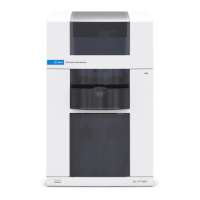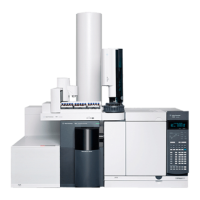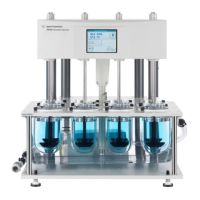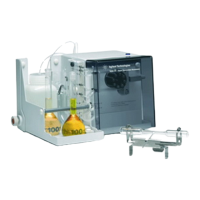Chromatographic Symptoms 3
Agilent 7890 Series Troubleshooting 59
• Inspect the column and inlet for contamination.
• Inspect the FID or NPD jet for contamination.
• To Check for a Plugged FID Jet
• To Replace an FID Jet
• To Check for a Plugged NPD Jet
• To Maintain the NPD Collector, Ceramic Insulators, and
Jet
• Verify that the FPD photomultiplier tube (PMT) is properly
installed. If it is not, light leaks and ultimately noise will
result.
FIDs are susceptible to gradual buildup of deposits in the
detector. In extreme cases, spiking occurs along with increased
noise level.
Carbon (black) deposits may form from solvents that burn
poorly (primarily chlorinated materials and aromatics). Avoid
such solvents if possible. If you must use them, be prepared to
clean the detector regularly.
Silicon dioxide (white) is formed when bleed from a silicone
column is burned in the flame. To minimize this, use low
column loadings, select phases with high temperature limits,
condition columns thoroughly before use, and use the lowest
possible oven temperature for the analysis.
To remove either type of deposit, disassemble the detector and
scrub with a small brush. A solvent (almost anything will do)
helps flush away the particles. Agilent recommends replacing
dirty collector and insulator parts.
Other factors that can contribute to noise:
• Column installed too high into detector.
• Oven temperature exceeds column maximum recommended
temperatures.
Baseline wander and drift
Baseline wander or drift can occur when a flow or temperature
setting is changed. If the system has not stabilized at the new
conditions before it starts a run, some baseline changes are to
be expected. The following cases assume that sufficient
stabilization time has elapsed since the last change in operating
conditions.
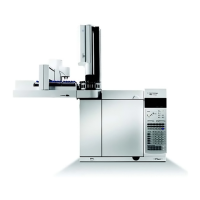
